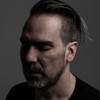Uriel del Angel's hospital bracelet.
Daniela and Jimena Garfias
Jesus's portrait was taken outside Mexico City's General Hospital where he was rescued after three days in the rubble with 52 other babies. Ninety-eight children were found dead on the same site.
Jesus Chucho Garcia Lopez
Rosa's portrait was taken where the famous Hotel Regis stood before the earthquake.
Rosa Garcia
Jesus Francisco Flores Medina (The Earthquake Boy)
Paulina's picture was taken where seamstresses, working in terrible sweatshop conditions died, when a building collapsed.
Paulina Guzman
SAUL GONZALEZ QUIÑONES AND URIEL DEL ANGEL
Cesar's picture was taken at the exact spot where the building block, Nuevo Leon, in Tlatelolco, collapsed. More than 300 people died in there.



